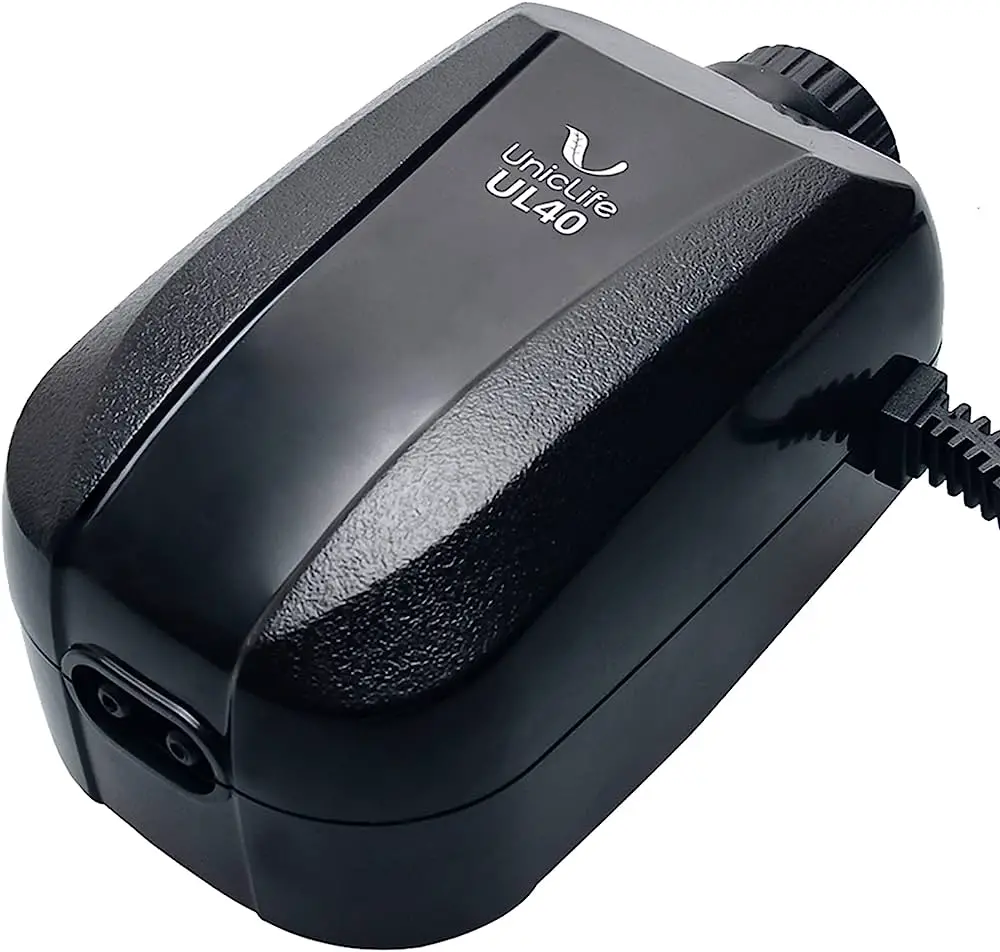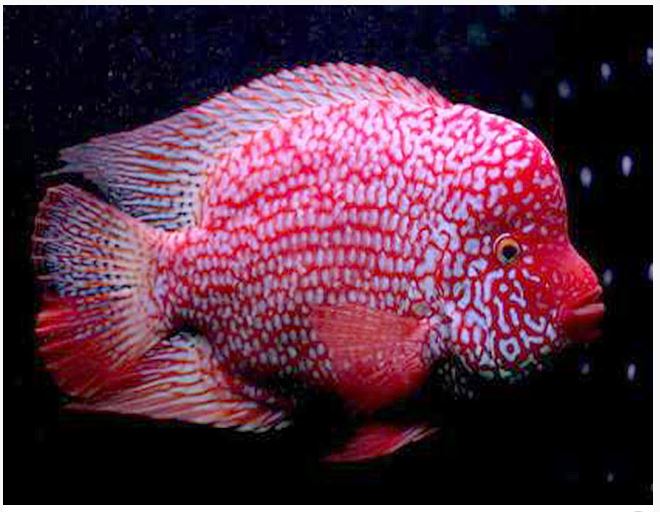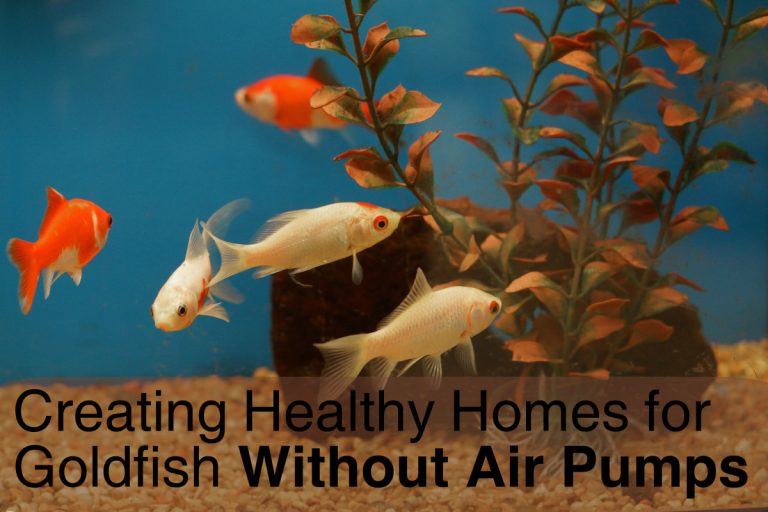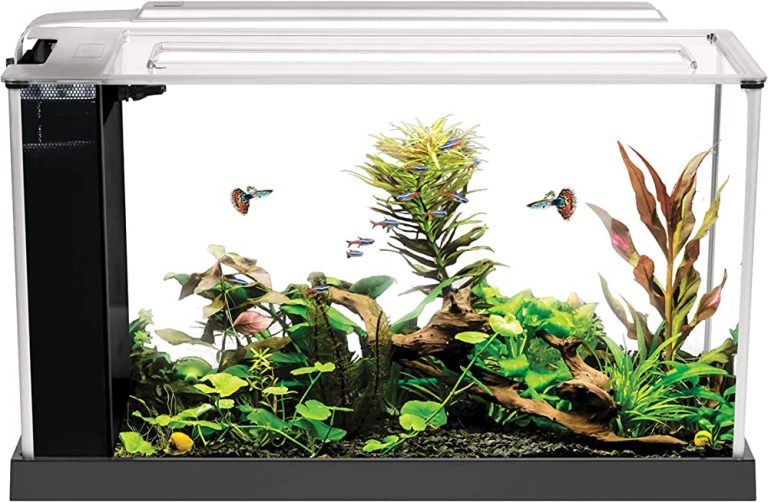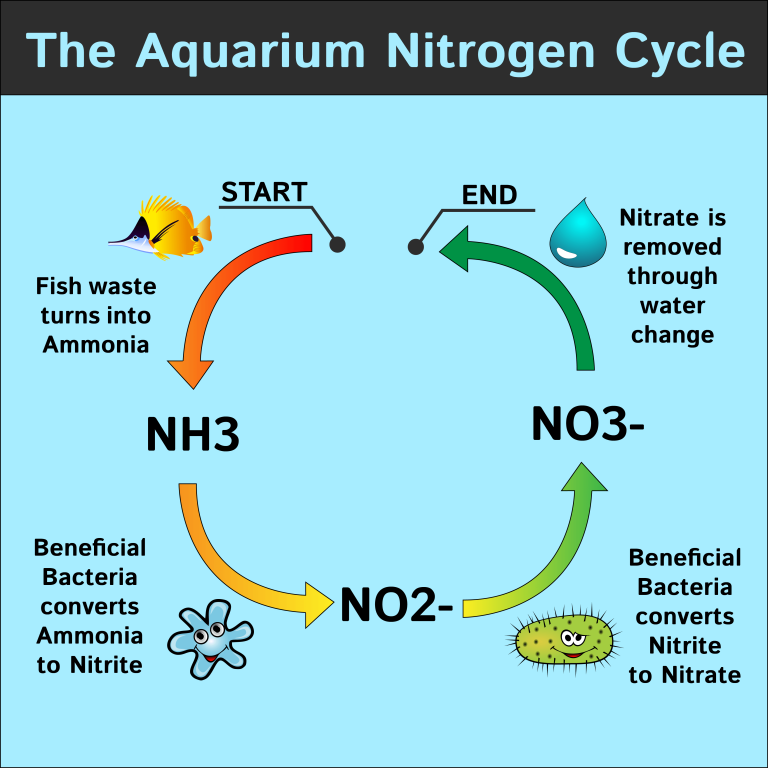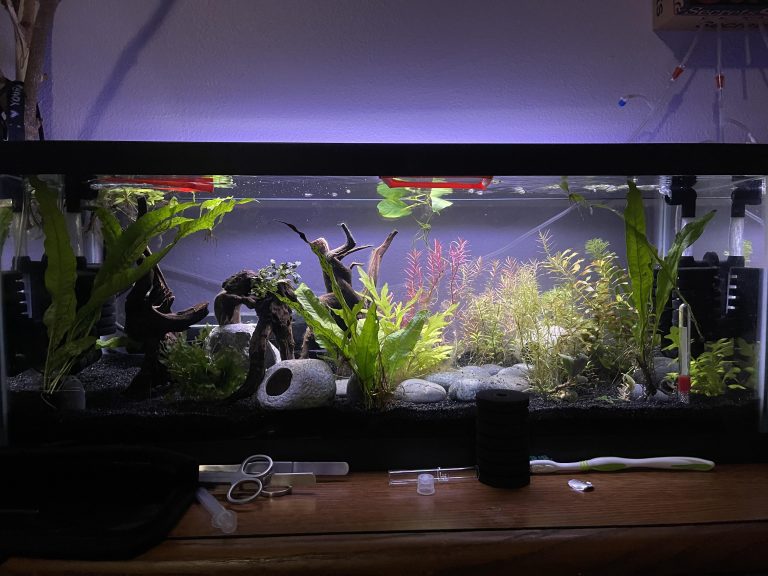Unleash the Max Performance: What Size Air Pump for Sponge Filter
The recommended air pump size for a sponge filter depends on the size of the aquarium and the number of fish in it. Generally, a small air pump with a flow rate of 40 to 60 gallons per hour (gph) is suitable for a sponge filter in a 10-gallon aquarium.
Proper aeration and filtration are crucial for the health and well-being of fish. A sponge filter is a cost-effective and effective filtration system that can be powered by an air pump. However, it’s important to use the correct size of air pump for the sponge filter to achieve optimal filtration and aeration.
Factors to consider when selecting an air pump size include the size of the aquarium, the number of fish, and the desired flow rate. Using an undersized air pump can result in inadequate filtration and oxygenation, while an oversized air pump can cause excessive water agitation and stress the fish. In this article, we will discuss how to select the appropriate air pump size for your sponge filter.

Credit: fishlab.com
Why Does Air Pump Size Matter For Sponge Filters?
The Importance Of Adequate Air Flow
When it comes to choosing the right size air pump for your sponge filter, adequate air flow is crucial. Here’s why:
- Proper air flow ensures that the sponge filter functions effectively and efficiently.
- Inadequate air flow will result in poor water circulation and low oxygen levels, which can harm your fish and plants.
- If the air flow is too strong, it can cause the sponge filter to clog quickly and reduce the filter’s lifespan.
How A Sponge Filter Works
Before you can understand the relationship between air pump size and sponge filter performance, it’s essential to know how a sponge filter works. Here are the basics:
- A sponge filter consists of a porous sponge that traps debris and waste particles from the aquarium water.
- As water flows through the sponge, beneficial bacteria break down harmful substances, converting them into less harmful compounds.
- The sponge filter’s effectiveness depends on the amount of water flowing through the sponge, which is directly related to the air flow from the air pump.
Understanding The Relationship Between Air Pump Size And Sponge Filter Performance
So, how does air pump size affect sponge filter performance? Here are a few things to consider:
- A larger air pump produces more air flow, which means more water flows through the sponge and better filtration.
- However, a larger air pump also produces more noise and vibrations, which can be irritating.
- A smaller air pump produces less air flow, which can cause the sponge filter to clog quickly and reduce its effectiveness.
- A smaller air pump is quieter and produces fewer vibrations.
It’s essential to strike the right balance by choosing an air pump that produces adequate air flow without being too noisy or powerful. Keep in mind that other factors, such as aquarium size and stocking density, will also affect the air pump size needed for your sponge filter.
Make sure to research and choose the right air pump size to ensure your sponge filter functions at its best capacity.
How Do Sponge Filters Work?
Overview Of Sponge Filter Mechanics
Sponge filters are one of the most popular types of filtration used in aquariums. They are simple, yet effective and can help to remove impurities and debris from the water column. The mechanics of a sponge filter are straightforward. Here’s how it works:
- Water from the aquarium is drawn into the sponge filter
- The sponge filter traps and collects debris
- The beneficial bacteria in the sponge filter breaks down harmful compounds
- The cleaner water is then released back into the aquarium
The Role Of Air Flow In Sponge Filter Performance
Airflow is a crucial factor in determining the efficacy of a sponge filter. The air pump provides the energy to draw water through the sponge, which in turn enhances the filtration process. The more air flow, the more water is drawn through the sponge, and the more beneficial bacteria are present.
Other factors that affect sponge filter performance include:
- Size of the sponge filter
- Density of the sponge
- The number of fish in the aquarium
- The size of the aquarium
What Makes Sponge Filters Different From Other Filtration Options
Sponge filters are known for their unique properties. Here’s what sets them apart from other filtration options:
- They are inexpensive and readily available
- They are easy to use and maintain
- They provide mechanical, chemical and biological filtration
- They do not require a high volume of water flow
- They are gentle on delicate plant and animal life
Furthermore, sponge filters make an excellent choice for a quarantine tank or breeding aquarium. Since there are no impellers or moving parts, sponge filters won’t harm fry or baby shrimp.
A sponge filter is an efficient and cost-effective way to maintain a healthy aquarium. With the right air pump and proper maintenance, a sponge filter can make all the difference in keeping your aquarium clean and clear.
What Is An Air Pump?
Air pumps are essential for operating aquarium sponge filters. They provide the necessary oxygen to aquarium surfaces while creating bubbles that help break down waste and promote the flow of water. In this blog post, we will discuss what size air pump is suitable for a sponge filter.
Specifically, this section will focus on what an air pump is, types of air pumps available, and how different sizes and outputs affect performance.
Overview Of Air Pump Mechanics
Air pumps are devices powered by electricity that sprout air through an outlet. They are designed to supply oxygen into the aquarium and aid in driving filters, air stones, and protein skimmers. Air pumps operate by sucking in air and then forcing it out via a movable diaphragm.
The diaphragm vibrates back and forth, creating pressure that drives air out of the air pump and into the aquarium.
Types Of Air Pumps Available
A wide range of air pumps is available, each with its set of features and benefits. There are two broad types of air pumps:
- Piston air pumps: Piston air pumps use motors to pump air and provide adequate pressure to drive multiple air filters or sponge filters.
- Diaphragm air pumps: Diaphragm air pumps are quieter, less expensive, and operate using a rubber diaphragm instead of moving parts.
These types of air pumps have different use cases, and selecting the right one comes down to the application and the user’s preferences.
Differences In Air Pump Size And Output
The size and output of an air pump are crucial determinants in how effectively it drives a sponge filter. Below are some key points to consider when selecting an air pump for a sponge filter:
- Choosing the right air pump size depends on the size of the aquarium. Generally, a one-fourth or half-watt per gallon of water is recommended.
- The output of an air pump, measured in liters per minute (lpm), determines the strength and size of the bubbles released into the tank. A higher lpm rating and more pressure can create larger and more consistent bubbles.
- Air pumps generate noise when operating. The higher the output rate, the louder the air pump operates.
Selecting the right size of air pump is crucial for the effective performance of a sponge filter in an aquarium. The key factors to consider are the size and output of the air pump, which suits the aquarium’s size and offers the necessary strength to drive the sponge filter.
The Importance Of Choosing The Right Size Air Pump
What size air pump for sponge filter: the importance of choosing the right size air pump
Sponge filters are an essential piece of equipment for aquariums. They work by pulling water through a sponge, which traps debris and provides a home for beneficial bacteria. An air pump is required to power the sponge filter, but it’s important to choose the right size air pump to ensure proper function.
Here, we’ll discuss how air pump size impacts sponge filter function, the link between air flow and sponge filter surface area, and the dangers of over or underpowered air pumps.
How Air Pump Size Impacts Sponge Filter Function
Choosing the right size air pump is crucial for the effective functioning of sponge filters. If the air pump is too small, it won’t be able to provide enough airflow to the sponge filter. On the other hand, if the air pump is too large, it can create excessive turbulence and disturb the beneficial bacteria living in the sponge.
Here are some key points to consider when choosing the right size air pump:
- The higher the water flow rate, the higher the air flow rate needed.
- The deeper the aquarium, the higher the air flow rate needed.
- The more sponge filters, the higher the air flow rate needed.
Linking Air Flow To Sponge Filter Surface Area
Sponge filters come in various sizes, and each has a specific surface area to maximize bacterial colonization. To ensure maximum efficiency, it’s essential to link the air flow rate to the sponge filter size. Here are some key points to consider when linking air flow to sponge filter surface area:
- A large sponge filter requires a high air flow rate to ensure effective suction.
- A small sponge filter requires a low air flow rate to prevent excessive turbulence.
The Dangers Of Over Or Underpowered Air Pumps
Over or underpowered air pumps can have serious implications for the health of your aquarium. An overpowered air pump can create excessive water movement, causing stress to your fish and disturbing the beneficial bacteria living in the sponge. Additionally, an underpowered air pump won’t provide enough airflow, resulting in reduced filtration efficiency and increased bacterial growth.
Here are some key points to consider to prevent these dangers:
- Always choose an air pump that matches the size and number of sponge filters in your aquarium.
- Monitor your aquarium regularly to ensure that your sponge filter and air pump are working correctly.
- Avoid overfeeding your fish, as excess food can clog the sponge filter and reduce its effectiveness.
Choosing the right size air pump for your sponge filter is essential for maintaining a healthy and thriving aquarium. By following these guidelines and regularly monitoring your equipment, you can ensure that your sponge filter is working effectively to keep your aquarium clean and healthy.
Evaluating Sponge Filter Size And Flow Rate
Selecting The Right Sponge Filter For Your Tank
Sponge filters are popular among aquarists due to their efficient and cost-effective filtration system. However, it is crucial to select the right sponge filter for your tank to ensure a healthy and thriving aquatic environment. Here are some key factors to consider when choosing a sponge filter:
- Tank size: Select a sponge filter that can handle the volume of water in your tank. The sponge filter’s packaging should indicate the tank size that it can accommodate.
- Fish load: The number and size of fish in your tank will impact the filtration requirements. If you have a high fish load, consider a larger sponge filter or multiple filters.
- Sponge pore size: Sponge filters come with different pore sizes, ranging from fine to coarse. Choose a sponge filter with a pore size suitable for the needs of your tank inhabitants.
- Filter shape: Sponge filters come in various shapes and sizes. Pick a shape that is compatible with your tank’s setup and inhabitants.
Understanding Sponge Filter Flow Rate Requirements
The flow rate measures how quickly the sponge filter pushes water through the sponge. The flow rate of the sponge filter should match the needs of your tank inhabitants. Here are some guidelines to help understand flow rate requirements:
- Freshwater tanks: The recommended flow rate for freshwater tanks is four times the tank volume per hour.
- Saltwater tanks: The recommended flow rate for saltwater tanks is ten times the tank volume per hour.
- Tank inhabitants: Some fish species have specific flow rate requirements, such as those that thrive in high-flow environments or those that require low-flow environments.
Matching Air Pump Size To Sponge Filter Capacity
Air pumps provide the power needed to push water through the sponge filter. To determine the correct air pump size for your sponge filter, consider the capacity of your filter and the depth of your tank. Here are some tips for matching air pump size to sponge filter capacity:
- Sponge filter capacity: Sponge filter packaging typically lists the recommended air pump size for optimal performance. Ensure that you follow the manufacturer’s recommendations.
- Tank depth: Deeper tanks require more power to push water through the sponge filter due to increased water pressure. Choose an air pump that can accommodate the depth of your tank.
- Over-filtering: It is better to over-filter than under-filter, so consider investing in a larger air pump and sponge filter than needed for your tank size.
By carefully selecting the right sponge filter size and flow rate and matching it with the correct air pump size, you can ensure a healthy and thriving aquatic environment for your tank inhabitants.
Assessing Tank Size And Depth
How Tank Size And Shape Influences Air Flow Needs
When it comes to choosing an air pump for your sponge filter, it’s important to consider your tank’s size and shape as it affects the air flow needs of your aquarium. Here are some key points:
- A bigger tank requires a more powerful air pump to ensure adequate aeration
- A non-standard shaped tank may need a stronger air pump due to the increased resistance in supplying oxygen throughout the entire tank space
- A taller tank will need a higher pump pressure to push the air deeper in the water column to ensure proper oxygenation
To help you determine the right size air pump for your tank, you can use the following formula:
- Gallons of water in the tank ÷ 4 = minimum rating of air pump in gallons per hour (gph)
The Role Of Water Depth In Air Pump Selection
Factoring in the depth of the water in your aquarium is also vital when choosing an air pump for your sponge filter. Here are some considerations you should be aware of:
- A deeper aquarium needs a more powerful air pump to ensure adequate oxygenation
- Airflow can decrease as the depth of the water increases due to the weight of the water according to the laws of physics, so you need to get an air pump relatively powerful to provide the air to the diffuser/sponge filter.
- Be sure to get an air pump that has a high enough pressure to effectively pump air through the depth of your water.
Having a properly sized air pump ensures the longevity of your sponge filter, while also providing your fish with a healthy and oxygenated environment. Use these tips to choose the right air pump for your tank, taking into account both the size and depth of your aquarium.
Factoring In Additional Equipment And Components
Other Equipment That Influences Air Flow Needs
When choosing an air pump for your sponge filter, it’s important to consider other equipment that can affect its air flow requirements. Here are some things to keep in mind:
- Aquarium size and shape: A larger or oddly shaped aquarium may require a more powerful air pump to ensure adequate air flow throughout the tank.
- Air stones and diffusers: Using air stones or diffusers can reduce the air flow needed from your pump, so you may be able to choose a smaller one.
- Airline tubing length and diameter: Longer or narrower airline tubing can decrease air flow, so you’ll need a stronger air pump to make up for it.
The Impact Of Plants, Decorations, And Other Factors
Plants, decorations, and other factors in your aquarium can also have an impact on air flow needs. Here’s what you need to know:
- Live plants: Live plants can absorb dissolved oxygen and reduce the amount of air flow needed. However, they can also increase the need for filtration, so it’s important to strike a balance.
- Decorations: Decorations such as caves or tunnels can restrict water flow and alter the oxygenation of water in certain areas of your aquarium.
- Fish: The number and size of fish in your tank can affect air flow needs. More fish will require more oxygen and filtration, so you may need a larger air pump.
Balancing Filtration Needs With Aesthetic Preferences
It’s important to choose the right size air pump that can provide enough air flow for your sponge filter while also adhering to your aesthetic preferences. Here are some tips to help you strike that balance:
- Determine the filtration needs of your aquarium first and foremost. Choose an air pump that meets those needs.
- Consider the size and placement of your sponge filter. A larger filter or one placed in an awkward position may require a more powerful air pump.
- Decide whether you want your air pump to be audible or silent. Some pumps can be quite loud, which can be annoying in a bedroom or living room. However, silent pumps can be more expensive.
- Choose a design that fits your aquarium’s aesthetics. Some air pumps come in sleek, modern designs, while others are barebones. Choose the one that fits your style.
Noise Level
How Air Pump Size Impacts Noise Output
If you’re a fish enthusiast, you would understand the importance of a sponge filter and how it is an essential part of the aquarium. However, the air pump used to power it can significantly affect your aquatic experience by producing unwanted noise.
The size of the air pump used for your sponge filter has a significant impact on the noise output. Here’s what you need to know about how air pump size can influence noise levels.
- Larger air pumps tend to generate more noise than smaller ones due to their high capacity.
- A smaller air pump used with a sponge filter will produce less noise since it’s not as powerful and doesn’t require as much air pressure.
Selecting A Quiet Air Pump
Investing in a quiet air pump is essential if you want to provide a peaceful aquatic environment. Consider the following tips before selecting a quiet air pump for your sponge filter:
- Choose a piston-driven air pump instead of a diaphragm pump. They’re more efficient and run quietly.
- Check the manufacturer’s decibel rating to see how loud the air pump operates.
- Look for models that come with noise-canceling features such as rubber padding to absorb vibrations.
Techniques To Reduce Air Pump Noise
If you already have an air pump for your sponge filter and it’s producing too much noise, don’t worry. Here are some proven techniques to reduce air pump noise:
- Place the air pump on a soft surface such as a rubber mat to reduce vibrations.
- Consider positioning the air pump away from the aquarium and use longer air tubes to deliver air to the sponge filter.
- Install a muffler on the air pump’s output valve to reduce noise levels.
Remember, a quiet air pump is essential for your aquarium’s health and your overall aquatic experience. Take the time to research and invest in a quiet model or apply techniques to reduce your existing air pump’s noise levels.
Energy Consumption
Understanding The Energy Needs Of Different Air Pump Sizes
When setting up a sponge filter, one of the key considerations is selecting the right air pump. It’s important to understand how much energy different air pump sizes require so that you can choose the best option for your needs.
Here are the key points to keep in mind:
- Air pumps come in different sizes, measured in liters per minute (lpm), and typically consume between 3 to 25 watts of power.
- Larger air pumps with higher lpm ratings tend to consume more energy than smaller ones.
- The amount of energy an air pump uses depends on factors like the length of tubing and the number of outlets connected to it.
- It’s important to choose an air pump size that is appropriate for the sponge filter and aquarium size, as oversized air pumps will consume more energy than needed.
The Impact Of Air Pump Size On Your Energy Bill
One important factor to consider when selecting an air pump for your sponge filter is how much it will cost to operate. Here are the key points to keep in mind:
- The energy consumption of an air pump directly affects your energy bill. The higher the wattage, the higher the cost.
- Running an air pump for prolonged periods of time can significantly increase your energy costs.
- Choosing the right size air pump to match your needs can help keep energy costs down in the long term.
- It’s important to evaluate the energy costs of all components of your aquarium system before purchasing to ensure the most cost-effective setup.
Choosing An Energy-Efficient Air Pump
To choose an energy-efficient air pump for your sponge filter, keep the following key points in mind:
- Look for air pumps with high lpm ratings that consume lower wattage. This means the air pump can deliver the required air volume with less energy consumption.
- Consider purchasing air pumps with adjustable flow rate control to easily adjust the air volume and reduce energy consumption.
- Look for air pumps that have been certified by energy ratings agencies, which can help you identify the most energy-efficient models.
- Always check product specifications and read product reviews to make informed decisions to ensure the best energy-efficient air pump.
Durability And Reliability
Evaluating Air Pump Construction And Materials
When it comes to choosing an air pump for your sponge filter, it’s important to consider the construction and materials of the pump. Here are some key points to keep in mind:
- Look for an air pump made of high-quality materials to ensure durability and reliability.
- Check that the pump has a sturdy, well-constructed body and that the motor is powerful enough to support the required air flow.
- Consider purchasing a pump with rubber feet to reduce noise and vibration.
The Longevity Of Different Air Pump Sizes
Different air pump sizes can affect the longevity of the pump, as well as its performance. Here are some things to keep in mind:
- Larger air pumps tend to last longer than smaller ones, as they have more powerful and durable motors.
- However, larger air pumps can also be more expensive and may not be necessary for smaller aquariums.
- When selecting an air pump, consider the size of your aquarium and its needs. You may be able to get away with a smaller pump if your tank is on the smaller side.
Choosing An Air Pump That Meets Your Long-Term Needs
When choosing an air pump for your sponge filter, it’s important to consider your long-term needs. Here are some tips to help you choose a pump that will meet your needs over time:
- Consider the size of your aquarium, as well as the number and type of fish you have. You may need a more powerful pump if you have a lot of fish or if you’re running multiple sponge filters.
- Think about any potential future changes to your aquarium setup, such as adding more filters or increasing the number of fish. You may want to choose a pump that can support these changes.
- Finally, read reviews and make sure to choose a reputable brand with a track record of producing high-quality, reliable air pumps.
By taking the time to evaluate air pump construction and materials, consider the longevity of different air pump sizes, and choose a pump that meets your long-term needs, you can ensure that your sponge filter is working efficiently and effectively for years to come.
Recap Of Key Points
Understanding Sponge Filter Mechanics
Before diving into the importance of air pump size, it’s crucial to understand how a sponge filter operates.
- A sponge filter uses a spongy material to trap debris and waste produced by your aquarium’s inhabitants.
- As water passes through the sponge filter, beneficial bacteria convert harmful toxins into less harmful compounds.
- These beneficial bacteria need oxygen to survive and thrive, which is where the air pump comes in.
The Relationship Between Air Pump Size And Sponge Filter Performance
The air pump’s size is a vital factor in the performance of your sponge filter.
- The larger the air pump, the more oxygen it can provide to the beneficial bacteria inside the sponge filter.
- A larger air pump results in more water movement and stronger suction, which helps to dislodge debris from the sponge filter.
- The speed at which the air pump operates may also affect the performance of your sponge filter. A faster pump will result in more bubbles and a stronger current.
Key Considerations For Selecting The Right Air Pump
When selecting an air pump for your sponge filter, many factors must be taken into account.
- The air pump’s size should be appropriate for the sponge filter’s size and the size of the aquarium.
- Consider the depth of the aquarium as a larger depth needs a more powerful air pump.
- The desired oxygen level of the aquarium plays a crucial role in determining the type of air pump that is needed, as different air pumps supply different levels of oxygen.
- Check the required power supply to operate the air pump and ensure that it can be easily installed and maintained.
- The quality of the air pump and the noise levels it produces are also critical factors, as it can interfere with the aquarium’s overall aesthetic and the health of your aquarium’s inhabitants.
Overall, understanding the mechanics of a sponge filter and the relationship between air pump size and sponge filter performance is crucial for selecting the right air pump size. Consider all the key factors when making your selection to ensure that your aquarium’s inhabitants thrive.
Frequently Asked Questions Of What Size Air Pump For Sponge Filter
What Size Air Pump Do I Need For A Sponge Filter?
The size of air pump depends on the size and number of sponge filters you have.
Is A Bigger Air Pump Better For A Sponge Filter?
No, a bigger air pump is not always better for a sponge filter. You need to match the air pump to the size and number of sponge filters you have.
How Do I Know If My Air Pump Is Too Small For My Sponge Filter?
If you notice reduced water flow or poor air supply to the sponge filter, your air pump may be too small.
What Happens If My Air Pump Is Too Big For My Sponge Filter?
Using a larger air pump than necessary can create too much water flow, leading to excess noise and disturbance to your aquatic pets.
Conclusion
Choosing the right size air pump for your sponge filter is essential for the health and longevity of your aquarium’s inhabitants. In order to determine the appropriate pump size, consider the volume of your tank, the flow rate of your filter, and the oxygen needs of your aquatic pets.
It’s important to remember that a pump that’s too weak won’t provide sufficient aeration while one that’s too strong can create too much turbulence, disturbing the delicate ecosystem of your aquarium. Keep in mind that different sponge filters may require different pump sizes, so it’s important to research and read the manufacturer’s instructions before making a decision.
Ultimately, finding the right balance between water movement and oxygenation will lead to a healthy and thriving aquarium. Don’t overlook the importance of properly sizing your air pump – your fish will thank you for it!
